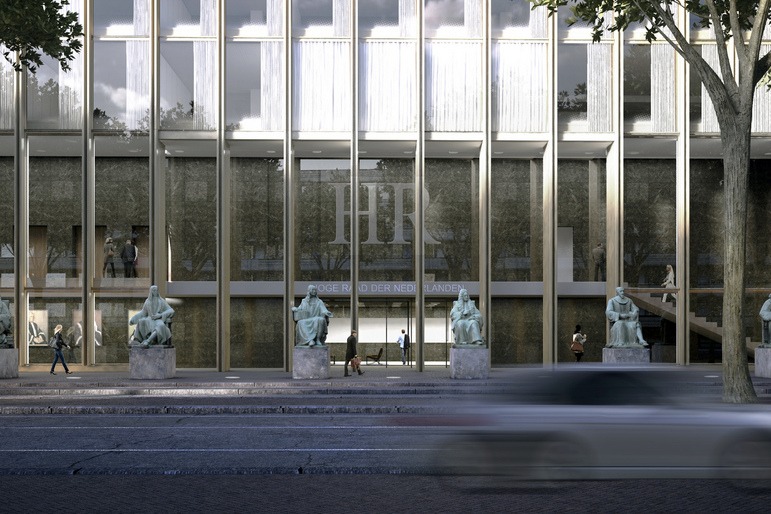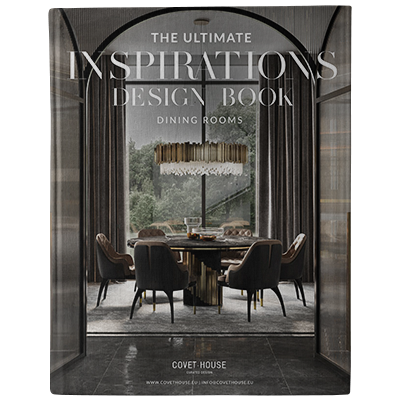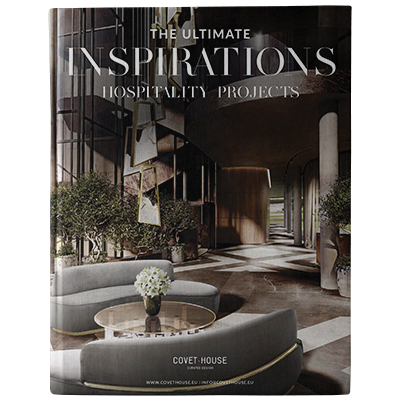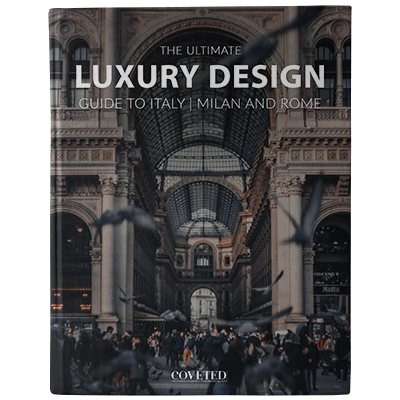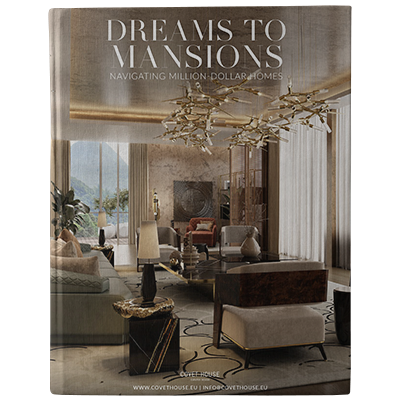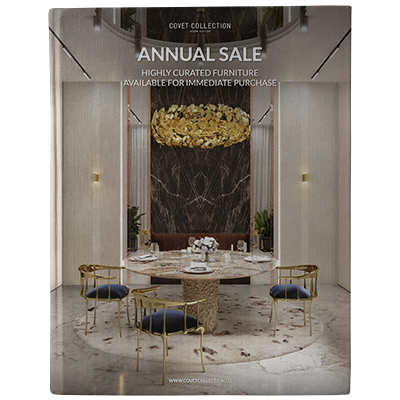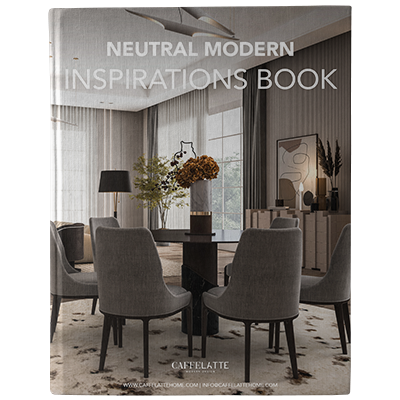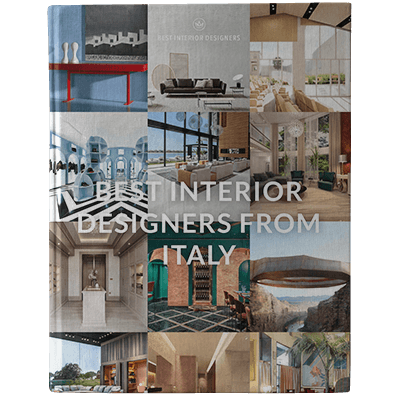Introduction
Wiel Arets is a Dutch architect, architectural theorist, urbanist, industrial designer and the Dean of the College of Architecture at the Illinois Institute of Technology in Chicago, Arets’ work is generally characterized by a minimalist, geometric and austere approach that responds to local contingencies in a flexible way, with Arets explaining:
‘We want our buildings to fit into the existing context, yet remain flexible and open to change’.
Biography
Wiel Arets was born on 6 May 1955 in Heerlen, Netherlands to Wiel Arets (1929) and Mia Heuts (1931). His father was a book printer and his mother was a fashion designer, both from whom he learned respect for the tradition of craft and a love of books and reading.[2] He briefly studied engineering, and then physics, before ultimately deciding on architecture. He divides his time between Chicago, Maastricht, Berlin, Amsterdam and Zürich, living and working in each city. He is married and has two children.
During his studies at the Technical University of Eindhoven Arets became fascinated by the works and words of Paul Valéry, Giorgio Grassi and Cesare Cattaneo, quickly developing his admiration for ‘the dialogue’ as an operative method, best exemplified by Valéry’s ‘Eupalinos’ and Cattaneo’s ‘Giovanni e Giuseppe’. While studying Arets co-founded the architectural journal Wiederhall and organized a series of visiting lecturers at the TU/e that included the architects Zaha Hadid, Tadao Ando and Peter Eisenmann, among others. Subsequently, Arets organized the first European exhibition of Tadao Ando’s work. It was during this period that Arets ‘rediscovered’ the work of Dutch architect Frits Peutz, who transformed the city of Heerlen from an industrial coal mining hub and into a modern city through his many built commissions funded by the coal industry, most recognizably the Glaspaleis. With the decline of industry the city lost most of its status as an industrial area in Limburg and Frits Peutz faded from architectural prominence.
As a student Arets undertook extensive research in the archives of Peutz’s office, eventually producing the monograph ‘F.P.J Peutz Architekt 1916-1966’ (1981) and an accompanying traveling exhibition. After graduating from the TU/e in 1983 Arets travelled extensively throughout Russia, the USA and Japan. While in Japan Arets visited and interviewed several prominent architects including Fumihiko Maki, Kazuo Shinohara, Itsuko Hasegawa and Tadao Ando, later publishing these interviews and articles in the Dutch architecture magazine de Architect.

In 1991 Arets published his first theoretical text, ‘An Alabaster Skin’, in a monograph of the same title. The text merged Arets’ fascinations of his studies and early career, including: cinematography, photography, the ‘city’, technology of the 20th century, the membrane or skin of a building, biology and the act of cutting and editing (in regards to cinematography), as well as the Postmodern architecture of the 1980s. Greg Lynn interprets the piece as so:
In 2004 Arets completed the library of Utrecht University, situated in the Uithof area of the campus designed by OMA which dictated a strict orthogonal requirement for all buildings. The library’s exterior glazing is screen printed with an image of bamboo shoots created by the photographer Kim Zwarts, returning as a tactile imprinted surface pattern on the library’s interior prefabricated concrete panel walls, which are painted black. This ‘tactility’ has since returned to more of Arets’ projects in the form of imprinted-concrete or screen printed glass exteriors.
In 2011 Arets’ studio won an international competition to design the IJhal at Amsterdam Centraal Station, part of the city’s plan to revitalize the waterfront by reconnecting it to the river IJ., and recently finished construction on the Allianz Headquarters in Zürich, Switzerland.
Academic positions
Arets was Dean of the Berlage Institute from 1995-2002 where he changed the school to a research based institute focusing on ‘progressive-research’, public lectures, publications, field trips, and intensive debates. Prior to that position he was and is a professor or guest professor at many architecture schools, mostly within Europe and the USA, and was until 2012 the ‘Professor of Building Planning and Design’ at the Berlin University of the Arts (UdK), Germany. While at the UdK ‘Tokyo Utopia/TOUT’, was Arets’ research theme, and he has previously used other research themes, such ‘Double Dutch’, to structure output and debate while teaching; they often return to give content and context to publications such as HUNCH.
1986–1989 Architectural Academies of Amsterdam and Rotterdam, Netherlands
1988–1992 Architectural Association, London, United Kingdom
1991–1994 Visiting Professor at Cooper Union, New York City, United States
1991–1994 Visiting Professor at Columbia University, United States
1994 Guest Professor at the Royal Danish Academy of Fine Arts, Copenhagen, Denmark
1995–2002 Dean of the Berlage Institute, Rotterdam, Netherlands
2005–2012 Professor at the Berlin University of the Arts, Berlin, Germany
2005 Guest Professor at the RWTH Aachen University, Aachen, Germany
2006-2012 Guest Professor at Universidad Politécnica de Madrid, Madrid, Spain
2010 Ruth and Norman Moore Visiting Professor at Washington University, St. Louis, United States
2012-2018 Dean of the College of Architecture at the Illinois Institute of Technology, Chicago, United States
Wiel Arets Architects
Wiel Arets Architects (WAA) is a globally active architecture and design firm, whose work extends to education and publishing, with studios located in the Netherlands and Switzerland. Comprised of an international team of architects, designers, thinkers, and administrators, the firm is currently involved in large number of projects throughout Europe, North America, Asia, and Africa. Its architecture and design emerges from research and a balance of hybrid-programming solutions, which adapt to and anticipate future contextual change. The output of WAA is acclaimed for both its craftsmanship and tactility.
See also: Top Interior Designers | Karim Rashid
Inspiring quotes by Wiel Arets
Architecture is therefore a between, a membrane, an alabaster skin, a thing that is at once opaque and transparent… It can only become part of the world by entering into a marriage with its surroundings.
On his line of Dot bathroom fittings for Alessi: We were very clear that we didn’t want to do something fashionable, we wanted it to still look new in ten years.” — Wallpaper*, 2007
On his idea of the emerging global metropolis: To understand the world we are living in at this moment, we have to redefine the ‘Map of the world’, a mental construct which at least since 1492 has undergone many reinperpretations. We could read the world anno 2020 as a collective living space for us all, in which all the continents are in reach within 288 minutes, and the maximum travel distance at each continent will be 72 minutes, the time in which every city on each continent will be able to be reached.”
Sometimes in spring there are beautiful trees that bloom, and suddenly, there are white blossoms everywhere. You don’t look at one particular spot. And I personally think that’s also true in architecture.
Awards
- Victor de Stuers Award (1987)
- Charlotte Köhler Award (1988)
- Rotterdam Maaskant Award (1989)
- Best Dutch Book Design Award 1989: Wiel Arets Architect (1989)
- Victor de Stuers Award (1994)
- Mies van der Rohe Award for European Architecture: Special Mention Emerging Architect (1994)
- BNA Kubus (2005)
- Best Dutch Book Design Award 2005: Living Library: Wiel Arets (2005)
- iF Product Design Award (2009)
- Good Design Award (2009)
- Amsterdam Architecture Prize (2010)
- ContractWorld Award (2011)
- Best Dutch Book Design Award (2010): STILLS: A Timeline of Ideas, Articles & Interviews 1983-2010 (2011)
- Geurt Brinkgreve Bokaal Award (2011)
- Communication Arts Typography Annual Award (2012): STILLS: A Timeline of Ideas, Articles & Interviews 1982-2010
- D&AD Award (2014): NOWNESS: IIT Architecture 2013-2014
- The Chicago Athenaeum International Architecture Award (2014): Allianz Headquarters
The Projects
Office – Supreme Court of the Netherlands
The Hoge Raad der Nederlanden, the Supreme Court of the Netherlands, is situated in The Hague, and appears restrained and transparent, projecting a sense of timelessness suitable to its neutral role separate from the country’s politics. Two courtrooms form the core of the project, both composed of natural stone, around which public space is laced on the ground floor.

These courtrooms are affixed with vertical voids in the form of pyramids. A third cone, composed of glass, creates an internal skylight. Foreseen to mainly be accessed by its monumental entrance, denoted by oversized perforated aluminum finned doors, the building is also ‘directionless’ in its outward orientation.

The façade is composed of a closed cavity system, which consists of insulation glass and an outer pane with a curtain in betwee–to ensure acoustic and thermal insulation. Transparent and translucent material qualities align with the precise programmatic requirements of both openness and seclusion. Appropriately, the vertical elements of the façade–when viewed from an angle–allow the public to perceive the building’s rigid materiality, while when viewed directly, the façade allows for continuous transparent views, depending on varying daylighting conditions.

Residential – The Post
Sited at the edge of the Vrijhof, a square in the center of Maastricht, the Post contains 19 short-stay apartments whose creation entailed the extensive renovation of an existing state protected monument–a post office originally constructed in 1915.
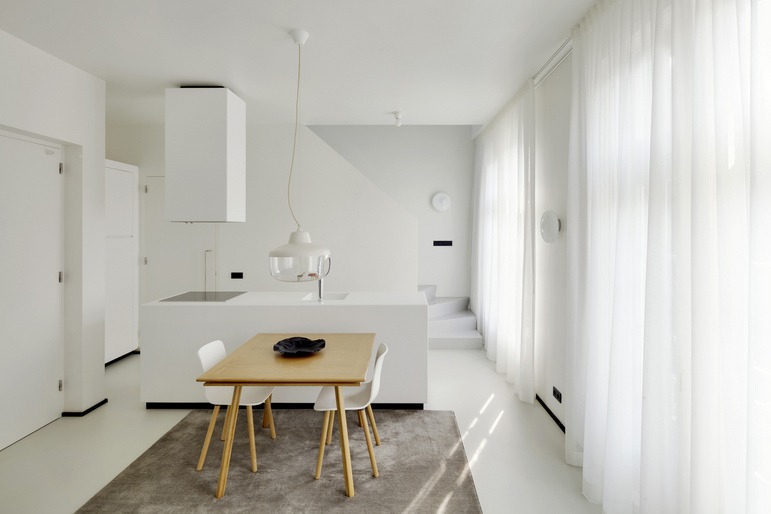
The main building is an outstanding example of Dutch brick expressionism, and its elements of historical significance were retained, such as the cast iron balustrade of the main staircase, and the two balconies flanking its Vrijhof facing façade.
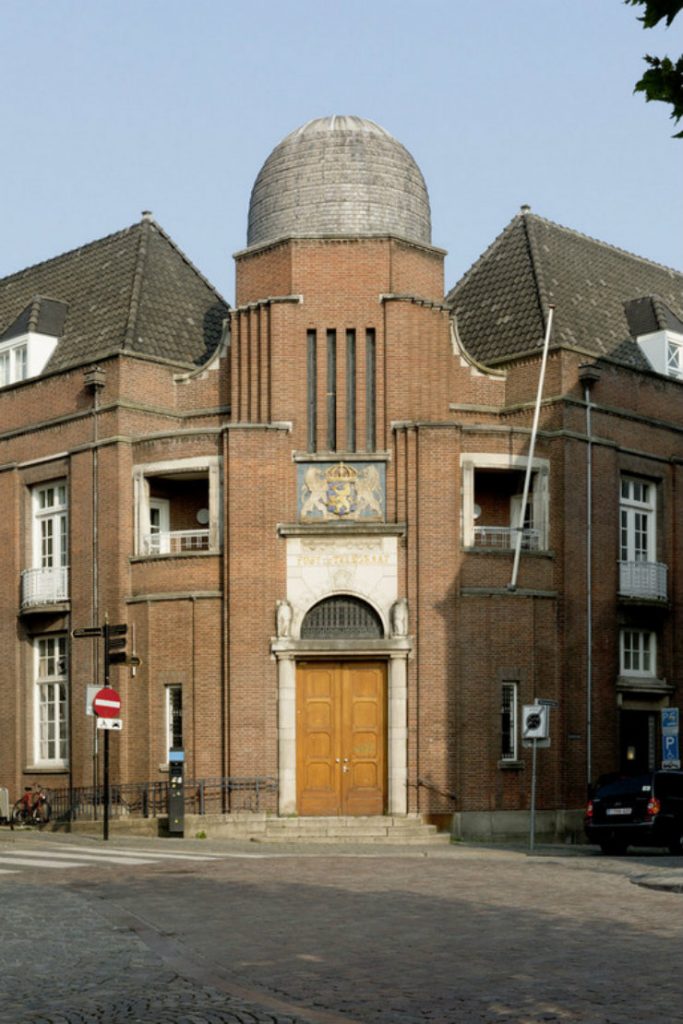
With the exception of these protected elements, the building was completely stripped of its original structure and interior divisions. The building is organized around a central circulation route, which begins in its courtyard and continues through to its the main staircase.
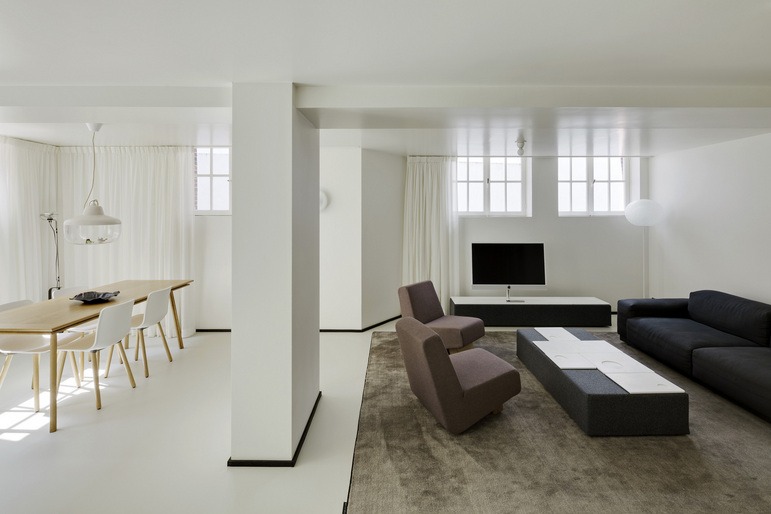
Each new apartment is unique in both orientation and layout, imparting hotel-like living within the center of this ancient Roman city. A glass structure in the courtyard will eventually contain two additional apartments and the reception space, or lobby, in order to welcome guests upon arrival. All apartments are completely furnished with WAA designed LaCucina Alessi kitchen, Alessi Il Bagno dOt bathroom fixtures and fittings, and the Siamese Chair produced by Lensvelt.

Residential – The Double
On the eastern edge of Amsterdam’s city center lies the Valkenburgerstraat; a major thoroughfare that was created in the 1960s, the eastern half of which saw the buildings that align it completely demolished and rebuilt during the 1990s. The street’s western edge has retained its historic buildings, all of which are from different decades of the last century–the Double is the newest addition to it.

The building is composed of two volumes, which together contain 45 units separated by an exterior communal courtyard garden on the roof of the ground floor. Most units have direct access to this communal area, and the units that abut it carve their terraces from it.

The front volume–which is six stories high–faces the street, while that of the rear–which is five stories high–overlooks a little trafficked canal. Nearly all units are outfit with polyurethane floors. Access to the core of both volumes, as well as to the garden, is possible from the submerged parking garage, which has 45 spaces.

The façades of both volumes are finished with textured glass shingles that create the illusion the project is clad in stone tiles; due to the larger scale of these glass shingles, the scale of the building appears larger than those it surrounds, most of which are composed of brick. The front façade is of two slightly varying shades of gray, so that the rhythm of the street’s movement is retained.
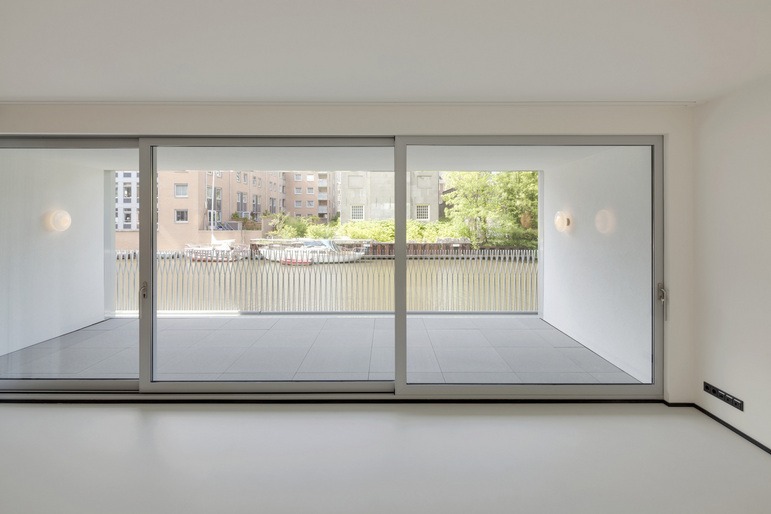
The foreside of the these glass shingles contains a relief, and a colored coating on their backs; the former introduces color to the façade–without the need to be repainted in the future–while the latter provides subtle texture onto which charlatan like dances of light and shadow can play.
Sports – Campus Leidsche Rijn
This school is located in a housing district on the edge of Utrecht named Leidsche Rijn. It is comprised of both an educational and vocational school, and the entire campus is divided into four wings that extend to the outer edges of its site. The campus is wrapped around a central volume that contains a shared library, café, and cultural center.

This cavernous central volume was created with a steel and concrete structure that carries four large roof beams, whose floors are suspended in a number of ‘zero-zero’ levels. It contains the sports facilities of the school; a rock climbing wall, multiple basketball courts, and a running track. An oversized grandstand overlooks this sporting area from above, so that local competitions and events can be independently held.

In contrast the load bearing walls of the four wings of the classrooms, the sports area’s upper stories are wrapped in glazing, which allows for views into and through it from the walkways that encircle it; this transparency permeates the entire building and contributes to informal interaction amongst educators and students. Numerous open staircases connect and intertwine all levels–most with out-of-the-way areas for casual conversation–which ensures an interior dynamism, or ‘interiority’.

Retail – Beltgens Fashion Shop
As a window onto into the heart of Maastricht; this men’s fashion boutique is located in the center of the city. It is formed by the intersection of a naturally lit horizontal space, which extends from the public street through the entrance and sales area, and out into a rear courtyard; a vertical space rises three levels from the sales area and houses the stock rooms of the boutique.

The main space and the display window face the street and, subsequently, an adjacent public square; they are silhouetted at night by a mysterious light that emanates from the courtyard beyond. An oversized door, double the height of the display window it abuts, allows the boutique to engage with the city, offering up a continual exhibition of color.

The front exterior façade is constructed of Corten steel and glass; this allows the boutique to seamlessly slip within its context little noticed. The interior is suffused with natural light, due to its expansive fenestration, and as such this intimate intervention juxtaposes, by the subtlest of contrasts, the maroon masonry walls of this ancient Roman city.

The Most Iconic Project
Utrecht University Library
The Utrecht University Library, established in 1636, is located on the Uithof campus, situated a short distance from the city center. It is comprised of the library itself and an adjacent parking garage with multiple voids–between which is a courtyard garden and a café named for Johannes Gutenberg–and the fenestration of both is fritted with an abstracted image of fossilized papyrus.

The relief of this image is imprinted on concrete panels, which are equal in size to the fritted glass panels; together they compose the building’s façade, and the concrete panels return within the interior. This fritted glazing protects the library’s heavily rotated books, on open shelves, by softening the amount of daylight that permeates the interior, so that their shelf life longevity is substantially increased.

Upon entry to the library, users are confronted with the café to their left, and an inviting grand staircase on their right–that ushers them up and into the first floor–which in essence creates a ‘zero-zero’ level that subsequently leaves the ‘ground floor’ undefined. The building facilitates both the group and independent study of students with 1.300 seats, 500 parking spaces, 560 student workstations, 300 librarian workstations, and an auditorium within its cavernous interior.
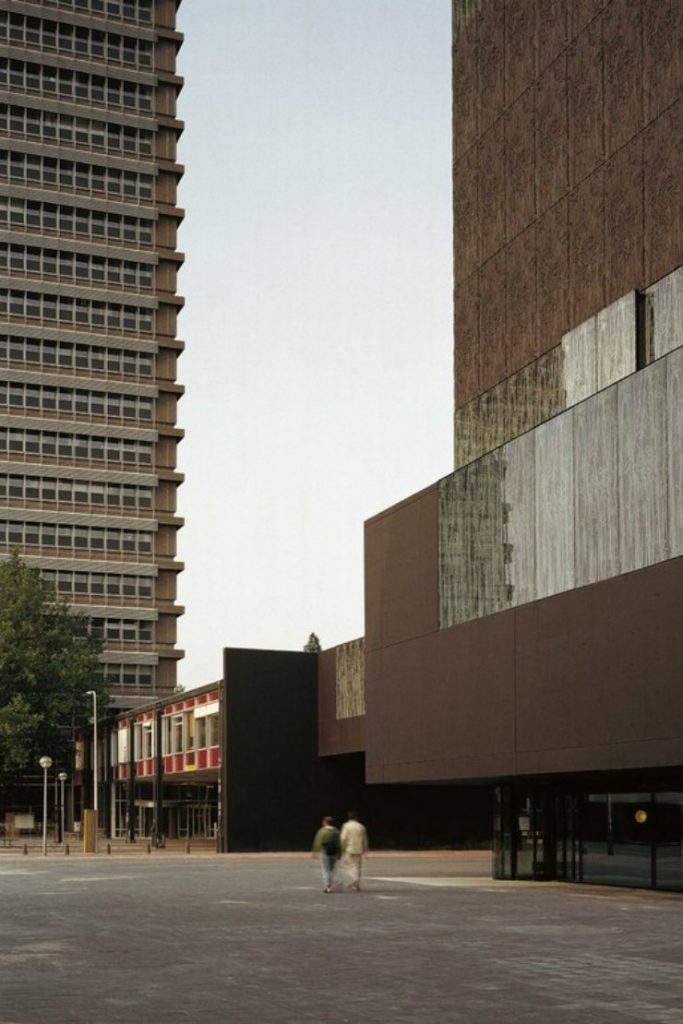
Its floors are finished in a glossy white polyurethane, while all other surfaces–with the exception of the custom designed orange-red furnishings, which denote areas of interaction with librarians–are painted matte black. Because of these finishes, when looking down from the library’s highest inhabitable space, white surfaces are predominately seen, while when looking up from below, matte black dominates.
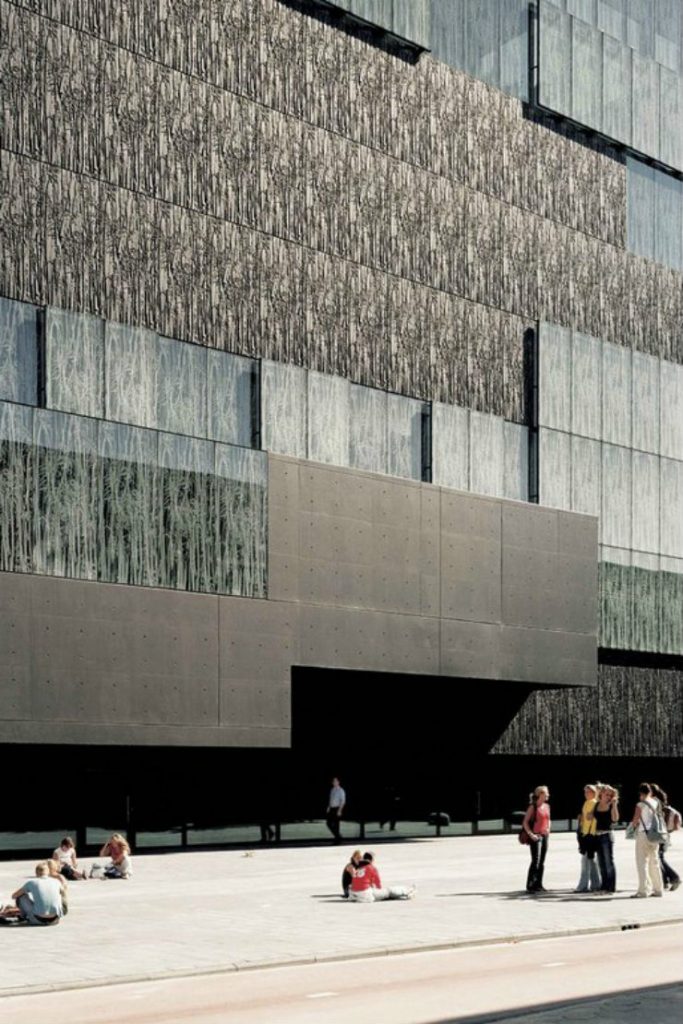
These opposing colors subconsciously direct users to their desired area: white surfaces denote circulation, while all black surfaces denote areas of study or contemplation. Individual study rooms are recessed off secondary circulation paths.
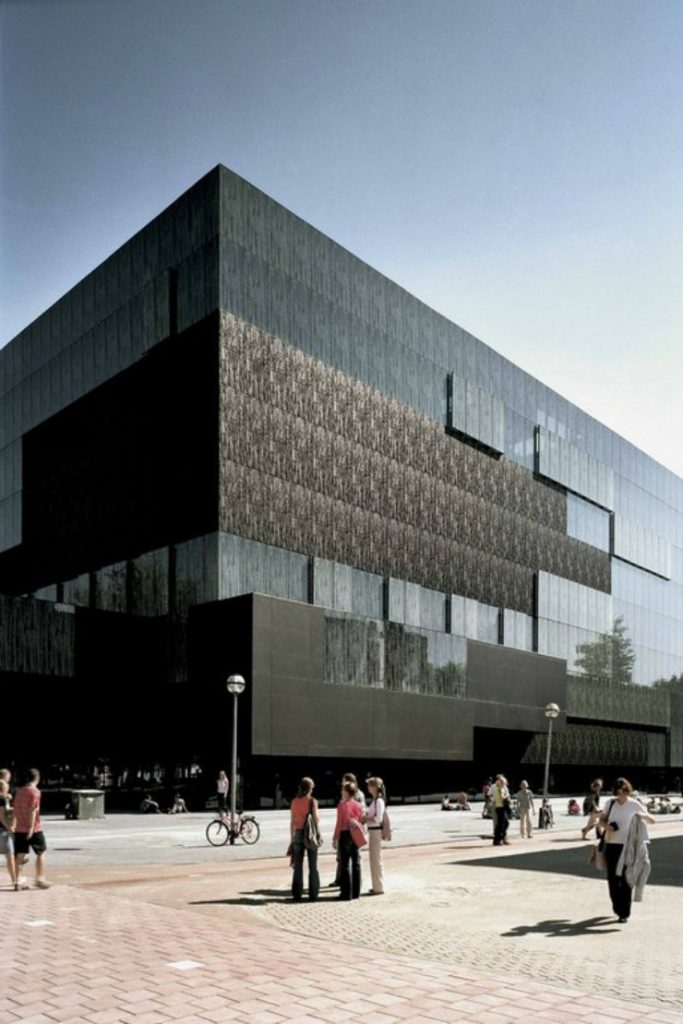
Where the library’s black concrete surfaces are imprinted with the papyrus relief, book stacks are to be found behind, as the library does not have one central book depot, and instead utilizes multiple stacks dispersed throughout each level, which seem to float like black storm clouds throughout the main space. When totaled, these stacks house more than 4.2 million books.

The omnipresent color black is critical to creating the interior’s transcending atmosphere of concentration, security, and silent communication–all of which are essential to the integrated functioning of this distinctively refined university library.











